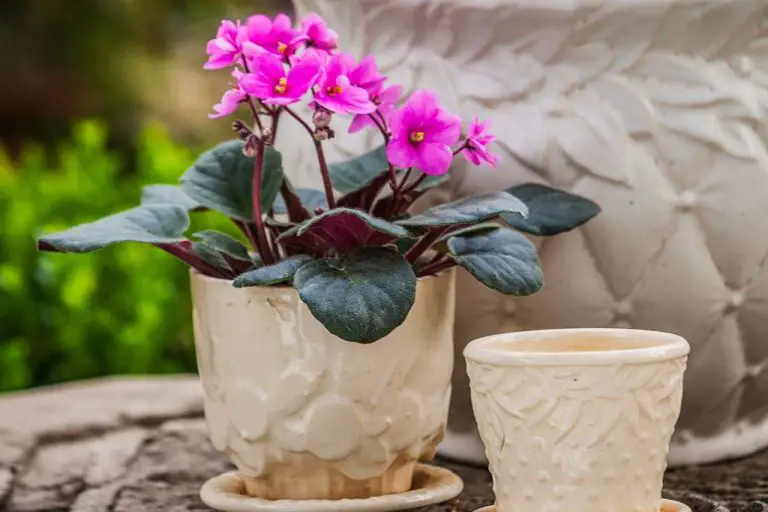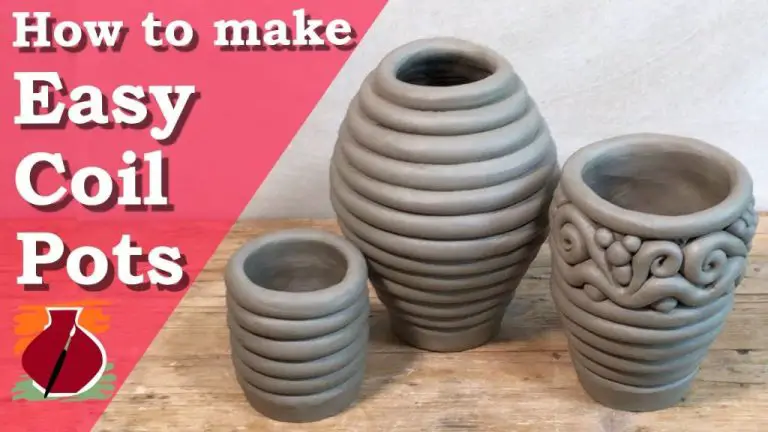Can You Wear Ceramic Masks?
Ceramic masks have been a popular art form and cultural tradition for hundreds of years, but have recently seen a surge in popularity for everyday wear. Ceramic masks are decorative face coverings made from clay that is shaped and fired at high temperatures. The earliest ceramic masks date back thousands of years and were an important part of ancient rituals and ceremonies. Today, ceramic masks are created with beautiful, intricate designs and worn for festivals, celebrations, decoration, or simply as a fashion statement.
In the past few years, ceramic masks have become a popular accessory and collectors’ item, with major fashion designers like Gucci featuring them in runway shows and advertising campaigns. Their rise in popularity can be attributed to their stunning and customizable designs, durability, and eco-friendliness compared to disposable masks. As the COVID-19 pandemic necessitated widespread mask-wearing, many people looked for stylish and reusable options, fueling interest in ceramic masks. From Venice-inspired masquerade masks to abstract modern designs, ceramic face masks allow wearers to make a statement and protect themselves in style.
Benefits of Ceramic Masks
Ceramic masks offer some major benefits over traditional cloth or disposable masks. The main advantage is that ceramic is a natural, breathable material. Terracotta clay allows for good airflow while still filtering out many airborne particles. This makes ceramic masks comfortable for long-term wear. The breathability also helps prevent the mask from getting too hot or humid inside, reducing feelings of stuffiness.
Studies have found ceramic to be effective at capturing tiny virus droplets. The natural porous structure can trap particles as small as 0.3 microns [1]. At the same time, the material remains permeable to air molecules. So a ceramic mask allows for airflow while filtering out many microscopic contaminants.
Compared to disposable masks, ceramic options are more sustainable and environmentally friendly. They can be cleaned and reused indefinitely, reducing plastic waste from single-use masks. Going with a ceramic mask is a greener choice.
Potential Drawbacks of Ceramic Masks
While ceramic masks offer some benefits, they also have some potential drawbacks to be aware of.
One issue that some users report is the heaviness of ceramic masks. Ceramic is generally thicker and heavier than materials like cloth, so some may find ceramic masks uncomfortable for long periods of wear. The weight on the face and pressure on the ears can cause discomfort over time [1].
Ceramic is also a rigid, brittle material. This means ceramic masks can be prone to cracking or breaking if dropped or impacted. The hardness of ceramic does not flex or absorb shock like softer materials. Users should take care to handle ceramic masks gently to avoid potential breakage [1].
How to Choose a Ceramic Mask
When selecting a ceramic mask, there are a few key factors to consider:
Weight – Ceramic masks tend to be heavier than other mask materials. Make sure to choose one that feels comfortable and not overly heavy when worn. Thicker ceramic masks can start to feel uncomfortable over time.https://www.veneziamaschere.com/how-to-choose-your-venetian-mask/
Thickness – Thinner ceramic masks are lighter in weight. However, thicker ceramic provides more protection and durability. Consider the purpose of the mask when deciding on thickness.
Straps – Since ceramic masks have some weight to them, adjustable straps that fit securely are important. Masks tied with ribbons can become uncomfortable with heavier materials. Look for masks with elastic straps or ties.
Test out some ceramic mask options to get a feel for the fit and weight distribution. Move your head side to side and talk to ensure comfort and flexibility. Consider the environment where you’ll be wearing the mask to choose the best ceramic mask for your needs.
Fitting a Ceramic Mask
Achieving a proper seal on your face is crucial for getting the most effectiveness and protection from a ceramic mask. Unlike cloth or disposable masks, ceramic masks won’t flex and mold to your facial contours on their own. Therefore, taking steps to customize the fit is important.
When making your own ceramic mask, ensure it is formed on a plaster cast of your actual face to account for your unique bone structure and proportions (source: https://www.reddit.com/r/Ceramics/comments/pe0dzb/tips_for_making_a_ceremic_mask/). This will provide the closest fit possible. You can also look for specialty ceramic masks made for medical use that are anatomically shaped for optimal sealing.
For premade ceramic masks, carefully test the fit and look for any gaps, especially around the nose, cheeks, and chin. You may need to gently bend or mold the mask at certain points to contour it to your distinct facial contours. Avoid excessive force as you don’t want to crack the ceramic material. Small gaps can be filled in with medical tape or silicone sealant designed for skin contact.
Always check the fit each time you put on your ceramic mask. Carefully adjust it and test for air leaks. A proper seal is necessary for the mask to work effectively at filtering particles. With some customization and testing, ceramic masks can form an airtight yet comfortable barrier on your face.
Cleaning and Caring for Ceramic Masks
Proper cleaning and care is important for maintaining the effectiveness and longevity of ceramic masks. Here are some tips:
Handwashing is recommended over machine washing. Use mild soap and lukewarm water. Avoid harsh detergents or abrasive materials that could damage the mask over time. Thoroughly rinse off all soap residue. Allow to fully air dry before wearing or storing.
Store ceramic masks in a clean, dry place when not in use. Avoid excessive moisture, heat, or direct sunlight which could degrade the materials. Place in a protective case or bag.
For masks with replaceable filters, be sure to change the filters according to manufacturer recommendations, usually after 30-60 days of use or when breathing becomes more difficult. Do not attempt to wash and reuse disposable filters.
With proper care, high quality ceramic masks can last for years of effective use. But be sure to inspect regularly and replace any mask that becomes damaged or no longer provides a good seal.
Using Ceramic Masks Safely
When using ceramic masks, it is important to follow safety guidelines to avoid inhaling dangerous silica dust particles. Here are some tips for using ceramic masks safely:
Avoid touching your face or mask while working. Any dust on the mask can be transferred to your face when you touch it. Wash your hands thoroughly before and after working.
Consider wearing a disposable mask underneath your ceramic mask for extra protection. The double mask approach helps filter out more particles. Replace the disposable mask regularly.
Take breaks outdoors to breathe fresh air and clear your lungs. Be sure to remove your mask safely before breaks.
Clean your ceramic mask after each use according to the manufacturer’s instructions. Let it dry fully before wearing it again.
Inspect your ceramic mask for damage regularly. Straps can wear out and filters may need replacing. Do not use a damaged mask.
Store masks in a clean, sealed container when not in use. Try to avoid exposing them to dust between projects.
Pay attention to any difficulty breathing as a sign to take a break or replace your mask. Do not ignore symptoms of silicosis.
Ceramic Masks for Different Situations
Ceramic masks can be useful in a variety of situations, depending on your exposure risk:
High-Risk Indoor Environments: Ceramic masks provide extra filtration and protection in indoor spaces with poor ventilation or high density of people, such as mass transit, airplanes, healthcare facilities, or crowded venues. The high-filtration capabilities can help reduce exposure risk in these settings (source).
Outdoor Exercise: When exercising outdoors around others, a ceramic mask can help filter airborne particles and droplets to protect yourself and others. The breathability of the material makes it suitable for more strenuous activity (source).
Work Settings: In workplaces with dust, debris, or chemical fumes, such as construction, manufacturing, or cleaning, ceramic masks provide protection from hazardous particles in the air.
Cold & Flu Season: The extra filtration of a ceramic mask provides an added barrier against respiratory droplets that transmit illnesses like cold and flu.
Allergies: Ceramic material can filter out pollen, pet dander, and other allergens, providing relief for allergy sufferers.
Ceramic Mask Designs and Styles
Ceramic masks come in a variety of designs and styles to suit different preferences. Here are some of the main options to consider:
Plain Ceramic Masks
Plain ceramic masks come in solid colors without any designs printed on them. They have a sleek, minimalist look. Plain masks are available in various colors like white, black, blue, pink, and more. The plain, simple style allows you to accessorize it with scarves or mask chains.
Printed Ceramic Masks
Printed ceramic masks have patterned designs on them. From polka dots to florals and abstract prints, patterned masks add visual interest. Printed masks come in many color palettes, letting you coordinate with your outfit. Popular prints include boho tribal prints, animal prints, artistic designs, and more.
Decorative Ceramic Masks
Decorative ceramic masks take it up a notch with ornate embellishments. Some have rhinestones, crystals, or beadwork integrated into the design. Others feature metallic accents. Masks with lace trims or laser cutouts also fall under decorative masks. These intricately adorned masks make a statement.
With various designs from plain to printed to decorative, ceramic masks offer options for different styles. Whether you prefer a simple, fuss-free mask or want to make your mask a fashion accessory, there are ceramic masks to meet your needs.
Conclusion
In summary, ceramic masks offer a unique alternative to typical cloth or medical masks. Ceramic provides a more durable material that can be easily cleaned and reused. The structure and fit of ceramic masks make them more comfortable for long-term wear. They also come in a variety of stylish designs. The key benefits of ceramic masks include:
- Increased protection – Ceramic material blocks more droplets and particles than cloth.
- Reusable – Ceramic masks hold up well to repeated cleaning and disinfecting.
- Comfortable – Rigid structure avoids sucking in against the mouth when breathing.
- Fashionable – Ceramic masks come in colorful designs and patterns.
- Environmentally friendly – Reusable ceramic masks reduce waste versus disposable masks.
With proper selection and fit, ceramic masks can be a functional accessory that protects you and expresses your personal style. Just be sure to follow guidelines on mask wearing and maintenance. With some thoughtful use, ceramic masks can play an important role in staying safe and healthy.




